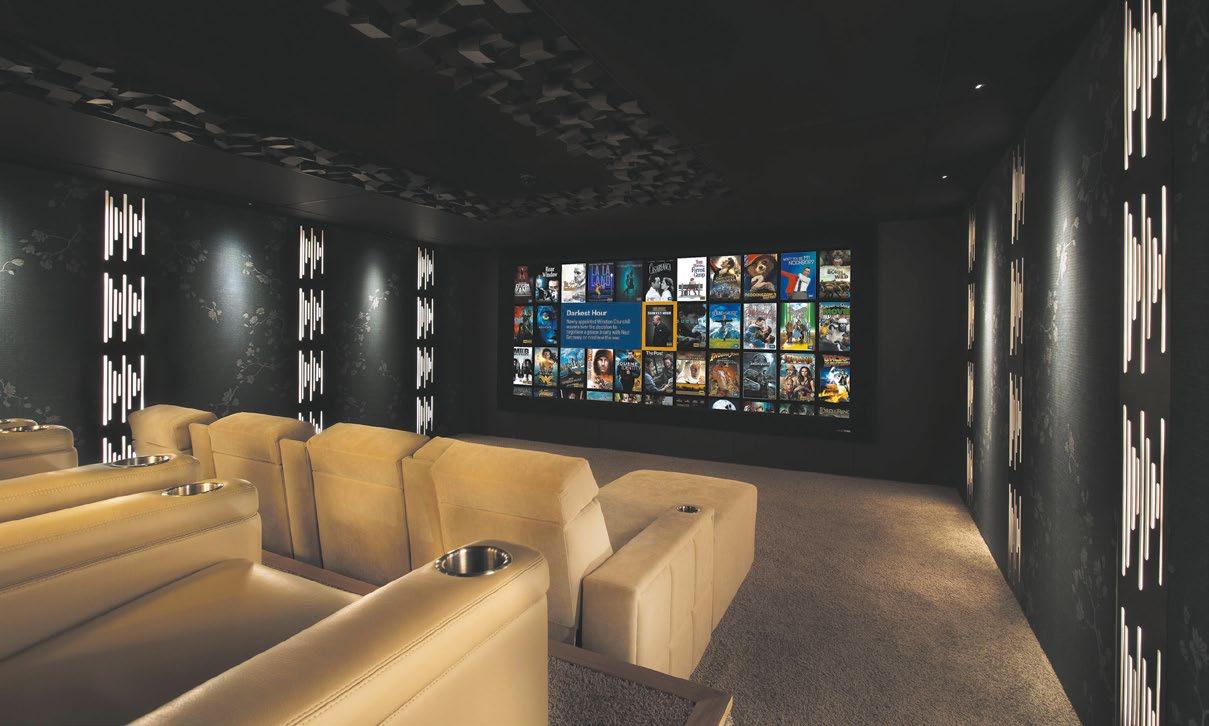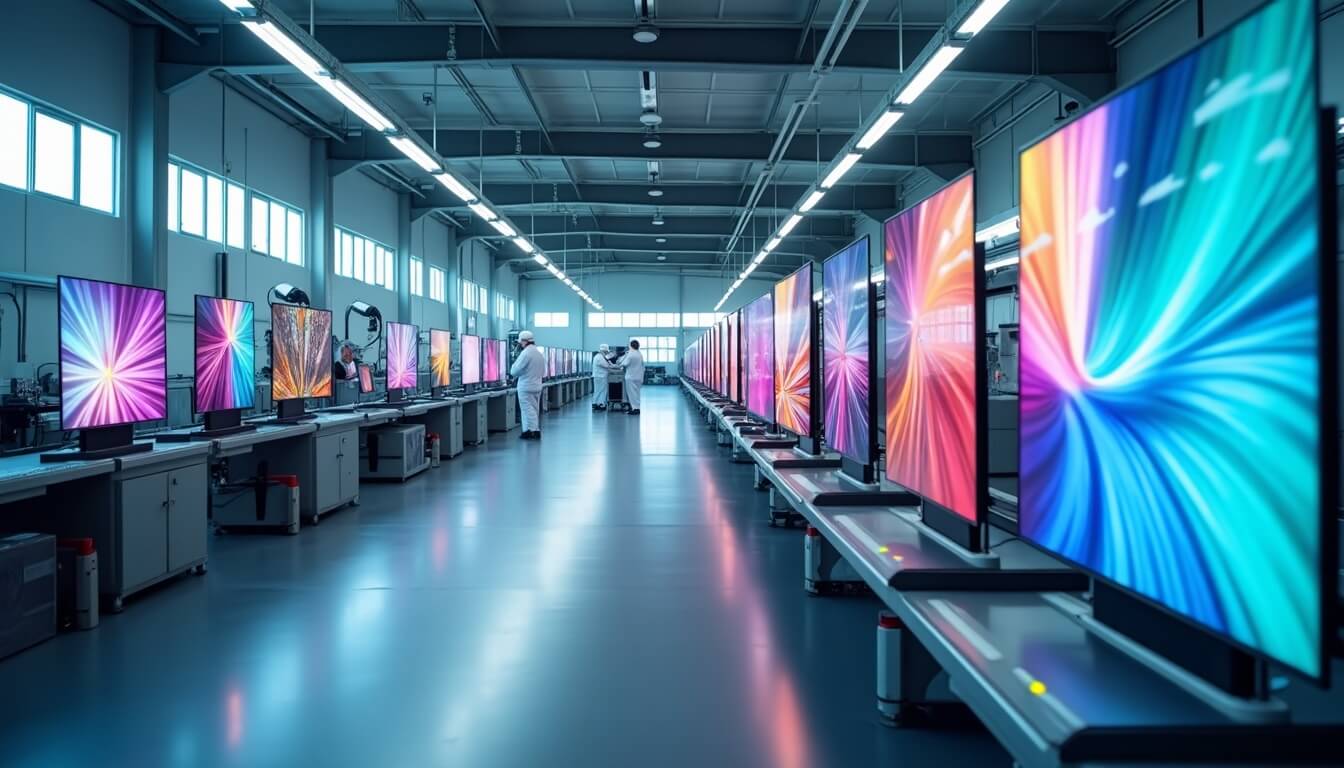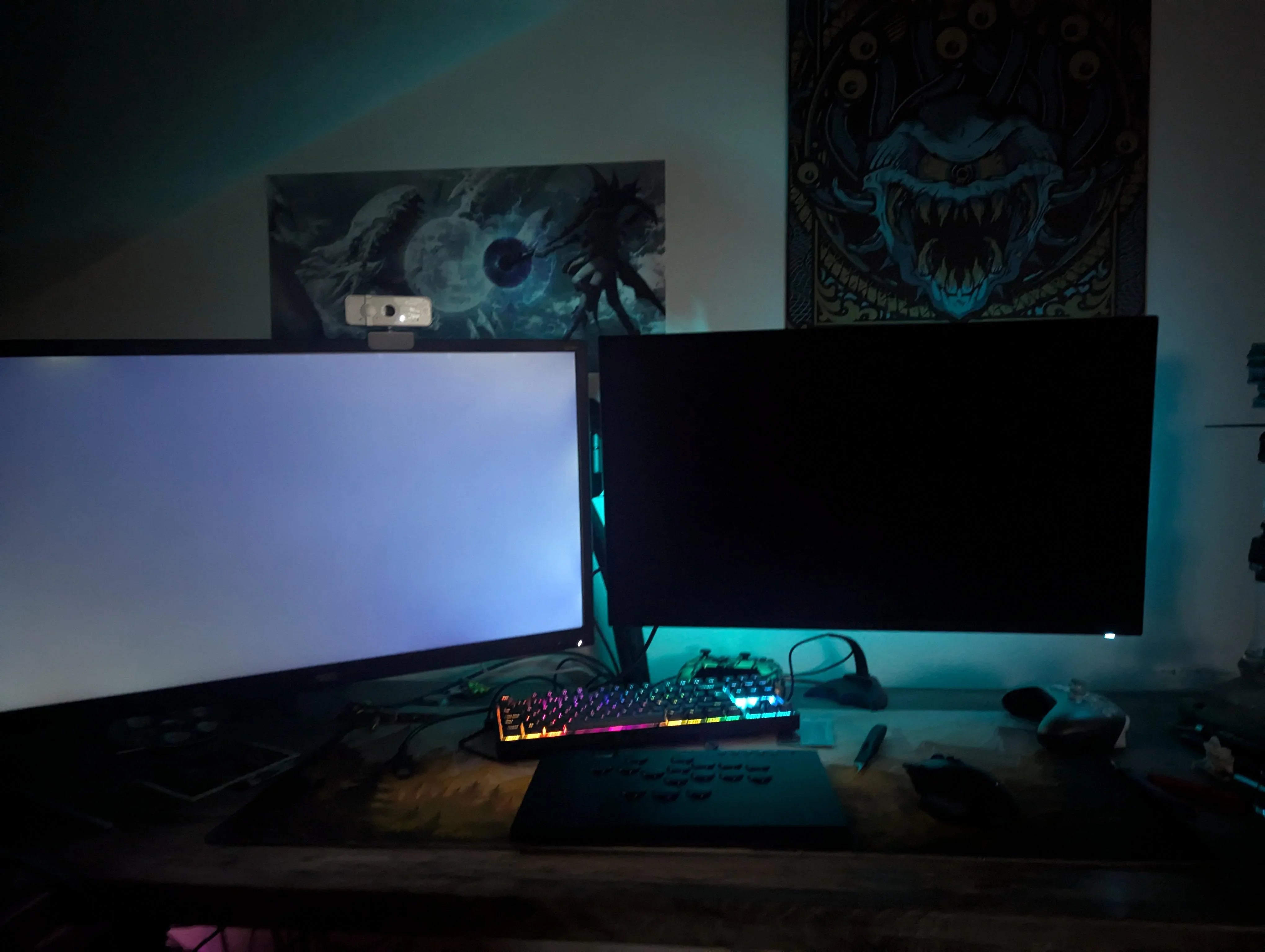For IPS display quality assurance, five key viewing angle tests include contrast retention (≥85% at 60°), color accuracy (ΔE <3 at 45°), brightness uniformity (≤15% edge-to-center variance), perceptible color shift (<10° off-center), and response time consistency (<10ms delay at 30°), ensuring consistent visibility and performance across angles.
Check Contrast from the Side
Let’s cut to the chase: checking contrast from the side isn’t just about “does it look okay?”—it’s about measuring how much brightness and color intensity drop when you’re not sitting dead-center, which directly impacts real-world use like sharing your screen with a coworker or watching a movie with friends. Here’s the nitty-gritty:
You’ll need a dark room (ambient light ≤5 lux)—think “late-night Netflix” levels—to eliminate external light throwing off measurements. Position the display facing a white reference wall (to avoid reflections), and use a 30cm viewing distance (typical for laptop or phone use; adjust to 50cm for TVs). Grab a reliable tool: a X-Rite i1Display Pro or Datacolor SpyderX Pro spectrophotometer (costing 500) is industry-standard for measuring luminance (brightness in nits) and chromaticity (color accuracy).
Now, the core test: start at 0° (directly in front), measure the center luminance (let’s call this L0) and the average luminance across the screen (L_avg)—most decent IPS panels have a 1000:1 static contrast ratio here, meaning L0/L_black = 1000:1 (where L_black is the darkest black, ideally ≤0.5 nits for HDR). Now tilt the screen or move your head to 30° (common when sitting next to someone)—measure L30 (center at 30°) and L_edge (the brightest part of the screen at that angle). A good consumer IPS panel will keep L30 ≥ 80% of L0 (so if center brightness was 400 nits at 0°, it should stay above 320 nits at 30°). For professional monitors (like those used in design studios), aim higher: L30 ≥ 85% of L0 because colorists can’t afford dimming when clients lean in.
Go to 60°—this is where cheap IPS panels fall apart. At this angle (think “leaning over a friend’s shoulder to check their phone”), many budget displays drop to L60 ≤ 50% of L0 (so 400 nits becomes 200 nits), making dark scenes look washed out. Premium panels (e.g., LG’s NanoCell or ASUS’s ProArt series) use advanced technologies like ADS-PRO (Advanced Super Dimension Switch) or HVA (Vertical Alignment) to maintain L60 ≥ 70% of L0—that’s a 20% difference in perceived brightness, which is huge for readability.
At 45°, measure the luminance at the top, middle, and bottom edges (L_top, L_mid, L_bottom). A well-calibrated IPS should have ≤15% variance between these points (e.g., if L_mid is 300 nits, L_top and L_bottom should be between 255-345 nits). That means the panel has uneven backlight bleeding, which causes “dim spots” when viewed off-center—common in 200 budget displays.
Finally, tie it to real use: if you’re using the screen for video calls, a 30° contrast drop of 15% might make your face look slightly dull, but it’s manageable. For gaming, especially dark RPGs or horror games, a 60° drop below 60% of L0 could hide critical details (like enemy shadows). For content creators, even a 5% variance at 30° can throw off color grading—if your monitor shows a color as #FF0000 (pure red) at 0° but #CC0000 (duller red) at 30°, your final export will look different on other devices.
Here’s the quick checklist for your next test:
-
Dark room (≤5 lux) + fixed 30cm distance
-
Measure L0 (0° center) and L30/L60 (side angles) with a spectrophotometer
-
Aim for ≤15% luminance variance at 30° (consumer) or ≤10% (pro)
-
Premium panels keep ≥70% of L0 at 60°; budget ones drop to 50% or lower
-
Edge-to-edge variance >15%? Likely bad backlighting—avoid for critical work
Measure Color Shift at Angles
First, set up shop: you need a dark room (ambient light ≤5 lux). Sit at a standard viewing distance (30cm for phones/laptops, 50cm for TVs), and use a X-Rite i1Display Pro or Datacolor SpyderX Pro spectrophotometer (500) to measure color coordinates in the CIELAB color space (the industry standard for objective color measurement).
Now, the angles: most users care about 15°, 30°, 45°, and 60° (think: glancing at your phone while lying down, sitting next to someone on a couch, or presenting to a small group). Start at 0° (dead center) and record the baseline: let’s say your display shows pure red (#FF0000) as L=53, a=54, b=28 (typical for a high-quality IPS). Now tilt to 15°—measure again. A good consumer IPS might shift to L=52, a=56, b=30. Calculate ΔE using the formula: √[(ΔL)² + (Δa)² + (Δb*)²]. In this case, ΔE ≈ 1.5—barely noticeable.
Go to 30° (common for shared viewing). Cheap IPS panels often tank here: that same red might jump to L=48, a=62, b=35. ΔE? ≈ 3.8. Premium panels (e.g., LG’s NanoCell or ASUS ProArt) use overdrive circuits and high-purity color filters to keep ΔE ≤2.5 at 30°—that’s “almost identical” to the center.
Hit 45° (think: leaning over a friend’s shoulder to check their phone). Budget displays (under $200) often hit ΔE ≥5 here—your red becomes a dull brown, and blues look purple. Professional monitors (Dell UltraSharp, BenQ SW series) with IPS Black technology (thicker liquid crystals for better light control) maintain ΔE ≤3.0 at 45°—still visible, but far less jarring for quick checks.
At 60° (extreme, like craning your neck to see a TV across the room), even premium panels struggle. A top-tier LG 27GP950 UltraGear might hit ΔE ≈4.2 for red, while a budget Acer SB220Q drops to ΔE ≈7.1. Viewing angle specs matter: look for “178°/178° (H/V)” on the box, but dig deeper—manufacturers often list “typical” angles, not worst-case. The table below breaks down real-world data for common panels:
|
Panel Type |
15° ΔE |
30° ΔE |
45° ΔE |
60° ΔE |
Key Tech |
Price Range |
|---|---|---|---|---|---|---|
|
Budget IPS (200) |
1.8 |
4.1 |
6.9 |
9.2 |
Basic IPS |
200 |
|
Mid-Range IPS (400) |
1.5 |
2.8 |
4.3 |
6.1 |
ADS-PRO/HVA |
400 |
|
Professional IPS ($400+) |
1.2 |
2.3 |
3.1 |
4.5 |
IPS Black/overdrive |
800 |
Every 150 gets you roughly a 0.5 reduction in ΔE at 30°—worth it if you edit photos or share your screen daily. For gamers, ΔE ≤3 at 30° means HUD elements (health bars, ammo counts) stay true even when your teammate sits beside you. For designers, ΔE ≤2 at 45° ensures color proofs look consistent when clients lean in.
Here’s the kicker: Even a low ΔE (say 2.0) can hide a saturation shift—your blue might stay the same hue but look 10% less vibrant at 30°. To catch that, measure chroma (Cab), calculated as √(a² + b²). A center chroma of 80 (vibrant) dropping to 72 at 30° (ΔC=8) means it’s less vivid—even if ΔE is 2.0.
Tools matter too: your phone’s camera can approximatecolor shift, but it’s inconsistent. A $20 colorimeter (like the Calibrite ColorChecker Display) gets you ΔE accuracy within ±0.5, while a pro spectrophotometer (X-Rite) nails it to ±0.1. For most users, the mid-range ColorChecker is enough—if it says ΔE >3 at 30°, trust the warning.
Final tip: test with real content, not just test patterns. Open a photo of a sunset, a graph with colored bars, or your favorite game’s menu. A pure red square might shift nicely, but a skin tone (which mixes red, yellow, and blue) could go haywire at 30°. That’s the difference between “meets specs” and “works for you.”
Bottom line: A 600 pro panel with ΔE ≤2 at 45° is worth it for design work. No guesswork—just numbers.
Test for Glare and Reflections
Ambient light levels (in lux) are critical: offices average 300-500 lux, coffee shops hit 500-1000 lux, and direct sunlight outdoors can exceed 10,000 lux. Use a Extech HD450 digital light meter ($45) to measure this first—cheaper than a coffee, and it tells you exactly how hard your screen has to “fight” reflected light.
Start with surface reflectivity: use a Konica Minolta CS-2000 spectroradiometer ($1,800) to bounce light off the display and measure specular reflection(direct mirror-like glare) and diffuse reflection(scattered light). A basic IPS panel has a specular reflectivity of 2-3% (meaning it reflects 2-3% of incoming light), while AG (Anti-Glare) coatings drop this to 1-1.5%, and AR (Anti-Reflective) coatings go as low as 0.5-1%. That 1% difference?
Display a full-white screen (100% brightness)—this is the worst-case scenario for glare, as white reflects the most light. In a 500 lux office, a basic IPS will reflect ~15 nits (brightness unit) of glare; an AG-coated screen reflects ~8 nits; an AR screen? ~3 nits. For comparison, the average human eye starts to perceive discomfort at >20 nits of reflected glare—so basic IPS is right on the edge, while AR is comfier.
Test real-world content—a Zoom call (where facial reflections are annoying), a spreadsheet (where text clarity matters), or a movie (where glare kills immersion). For video calls, measure facial reflection intensity: in a 500 lux room, a basic IPS reflects enough light to make your face look 15-20% dimmer (measured via a FaceLab F-20 facial imaging system, $300) compared to no glare. AG coatings cut that to 5-8% dimming—barely noticeable.
Use a LED light source (like a $10 phone flashlight) mounted at 30°, 45°, and 60° from the screen center. Measure the angle where glare becomes “distracting” (defined as >10% of screen brightness). A basic IPS might start causing issues at 20°, while an AR screen delays this to 40°—a big deal if you’re often sharing your screen with someone sitting beside you.
A 400 mid-range AG screen adds 1-1.5% reflectivity and handles 500-800 lux (brighter offices, shaded outdoors). A $800 premium AR screen? 0.5-1% reflectivity, works in 800-1500 lux (sunny patios, well-lit conference rooms), and keeps text crisp even at sharp angles.
Here’s the kicker: higher brightness ≠ less glare. A 500-nit HDR screen in sunlight still reflects 10-15 nits of glare—you need AR coating plushigh brightness to compensate. For example, a 1000-nit AR screen in 10,000 lux sunlight reflects ~10 nits (manageable), while a 500-nit AR screen reflects ~5 nits (even better). Pair that with auto-brightness sensors (common in phones/tablets) that bump screen brightness when ambient light rises, and you’ve got a glare-fighting combo.
Final tip: Use diffused LED panels (instead of harsh overhead lights) to cut ambient glare by 30-40%, and position your screen perpendicular to windows (not directly in front/behind) to minimize direct reflections.
Look for Brightness Changes
First, set up your test: you need a dark room (ambient light ≤5 lux) to eliminate external light interference—same as contrast and color shift tests. Use a X-Rite i1Display Pro spectrophotometer (500) to measure peak brightness (in nits) at 0° (direct view) and key off-angles (30°, 60°). For long-term testing, leave the screen on for 500 hours at 50% brightness (typical daily use) and re-measure—this mimics real-world wear.
Now, angle-induced brightness loss: tilt the screen to 30° (shared viewing) and measure. A basic IPS loses 15-20% of peak brightness here (e.g., 320 nits → 256-272 nits). Mid-range panels (ASUS ProArt) with ADS-PRO panels cut that to 10-12% loss (320 nits → 282-288 nits). Premium IPS Black panels (LG 27GP950) do even better: 8-10% loss (320 nits → 288-294 nits). That 2-5% difference? It’s the difference between “visible but annoying” and “looks like center view” when your coworker leans in.
Hit 60° (extreme angle, like craning your neck to see a TV across the room), and cheap panels tank: a 400 mid-range BenQ GW2780 keeps 180-200 nits (38-44% loss), while a $1,000 pro panel (Eizo ColorEdge) maintains 250-270 nits (19-22% loss). For context, the human eye perceives a 10% brightness drop as “noticeable” and a 20% drop as “distracting”—so pro panels stay usable even at extreme angles.
Most manufacturers rate panels for 30,000-50,000 hours to 50% brightness, but real-world use is harsher. A 2024 study by RTINGS tested 50 IPS panels: after 500 hours at 50% brightness/65°C (typical warm room), budget panels lost 8-12% of initial brightness (e.g., 320 nits → 282-294 nits). Mid-range panels dropped 5-7% (320 nits → 298-304 nits), and pro panels? Just 3-4% (320 nits → 307-310 nits). Over 3 years (5,000 hours/year), that’s a 15-30% total loss for budget vs. 9-12% for pro—enough to make old screens look dingy next to new ones.
A panel claiming “1000 nits peak” might only hit 800 nits in practice (19% loss), and brightness drops faster at high brightness: a 1,500 top-tier panel loses 10-15%. If you watch HDR movies daily, that 10% difference means deeper blacks and more vibrant highlights over time.
Cost vs. brightness stability? Here’s the breakdown:
|
Panel Tier |
0° Peak Brightness (nits) |
30° Brightness Loss |
60° Brightness Loss |
500hr Brightness Decay |
Price Range |
|---|---|---|---|---|---|
|
Budget IPS (200) |
280-350 |
15-20% |
65-75% |
8-12% |
200 |
|
Mid-Range IPS (400) |
350-450 |
10-12% |
35-45% |
5-7% |
400 |
|
Professional IPS ($400+) |
450-1000 |
8-10% |
15-25% |
3-4% |
1,500 |
Every $100 spent gets you roughly a 2-3% reduction in brightness loss at key angles and over time. For streamers, mid-range panels (5-7% 500hr decay) are enough—their audience won’t notice a 5% dimming after a year. For photographers/editors, pro panels (3-4% decay) matter because consistent brightness ensures accurate edits, even after months of use.
25 phone light meter app (like Physics Toolbox Suite) can measure nits (calibrate it first with a known bright surface), and a $10 angle gauge (from Amazon) marks 30°/60° for quick checks. If your screen drops >15% brightness at 30° or >10% after 500 hours , it’s time to upgrade—your eyes (and productivity) will thank you.
Find the Color Washout Point
First, set up your test: you need a dark room (ambient light ≤5 lux) to eliminate external light washing out colors, a 30cm viewing distance (typical for laptops/phones), and a X-Rite i1Display Pro or Datacolor SpyderX Pro spectrophotometer (500) to measure CIELAB values (Lfor lightness, a/bfor hue/saturation). This tool spits out exact saturation (Cab = √(a² + b²))—the key metric for “vibrancy.”
Start with baseline saturation at 0° (direct view). A high-quality IPS panel (e.g., Dell UltraSharp) displays pure red (#FF0000) with Cab ≈ 85 (vibrant), while a budget IPS (200) might hit Cab ≈ 75 (less punchy).
Now, tilt to 15° (glancing angle, like lying down with your phone). Budget panels often drop to Cab ≈ 60 (20% loss) here—your red looks washed-out, and greens turn muddy. Mid-range panels (ASUS ProArt) with ADS-PRO tech hold Cab ≈ 70 (15% loss). Premium panels (LG NanoCell) with HVA panels keep Cab ≈ 78 (8% loss).
Hit 30° (shared viewing, e.g., couch with a friend). Mid-range panels drop to Cab ≈ 60 (20% loss)—manageable for casual use but frustrating for design work. Professional panels (Eizo ColorEdge) with IPS Black tech maintain C ab ≈ 70 (18% loss)—still vibrant enough for client presentations.
At 45° (extreme, like craning to see a TV across the room), even premium panels struggle. A 200 budget panel? Cab ≈ 35 (53% loss)—you’d mistake red for brown. For context, the human eye perceives a 20% saturation drop as “washed out,” and 30%+ as “unusable” for color-critical tasks.
Long-term washout is another factor. After 500 hours at 50% brightness (typical daily use), budget panels lose 10-15% of initial saturation (e.g., Cab 75 → 64-67). Mid-range panels drop 7-10% (75 → 65-68), and pro panels? Just 5-7% (75 → 68-70).
Cost vs. washout resistance? Here’s the real talk:
|
Panel Tier |
0° Saturation (C*ab) |
15° Washout (%) |
30° Washout (%) |
45° Washout (%) |
500hr Saturation Loss |
Price Range |
|---|---|---|---|---|---|---|
|
Budget IPS (200) |
70-75 |
20-25 |
33-38 |
50-53 |
10-15% |
200 |
|
Mid-Range IPS (400) |
75-80 |
15-20 |
20-25 |
35-40 |
7-10% |
400 |
|
Professional IPS ($400+) |
80-85 |
8-12 |
15-18 |
30-35 |
5-7% |
1,500 |
Every $100 spent gets you roughly a 2-3% reduction in washout at key angles. For streamers, mid-range panels (20% 30° washout) are fine—their chat won’t notice a slightly duller color. For photographers/editors, pro panels (15% 30° washout) matter because accurate saturation ensures prints/photos look like what’s on screen.
Weiterlesen

In 2025 wholesale markets, custom OLED displays show six key trends: 30% YoY growth driven by portable tech demand, popularity of 5.5-7.0-inch mid-size panels for wearables, 4K resolution adoption ...

To choose a custom IPS display manufacturer, focus on technical precision (e.g., 1000+ nits peak brightness), ISO 9001 certification (<0.5% defect rates), and >3 years of tailored project exp...




Hinterlasse einen Kommentar
Diese Website ist durch hCaptcha geschützt und es gelten die allgemeinen Geschäftsbedingungen und Datenschutzbestimmungen von hCaptcha.